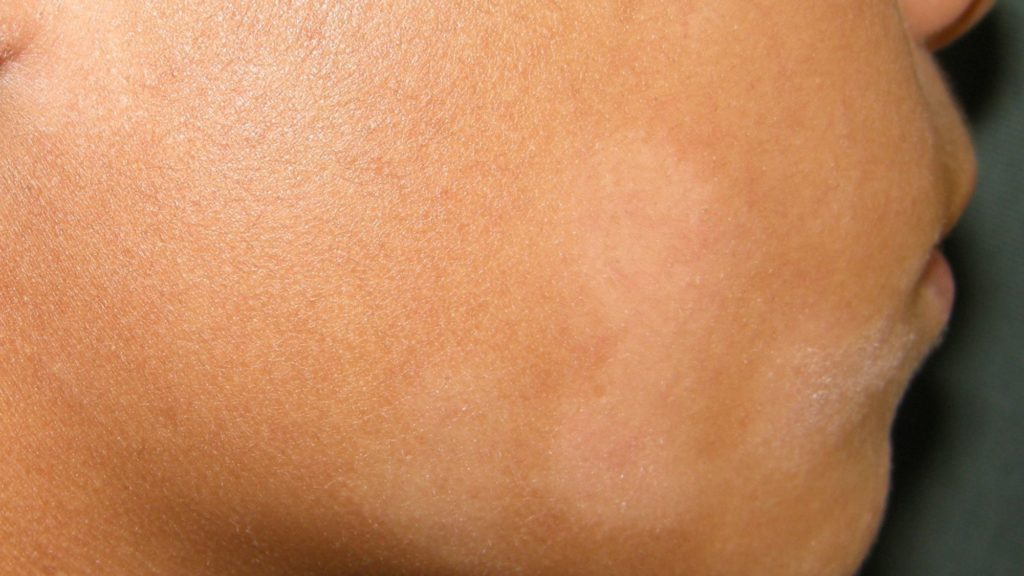The dryness of the environment and the chlorine in swimming pools seem to explain white spots appearance. With proper care, these white spots that disfigure the face of many children in the summer will disappear completely.
White spots appear in some children in early spring or during and after the summer season. This hypopigmentation occurs as the skin becomes darker and is more common in children with dry skin. It usually makes its first appearance around the age of 6, although it can appear between the ages of 2 and 4 or start at 14 or 15.
These white patches, scientifically known as pityriasis alba, are easy to recognize: they have a rounded shape, they are lighter than the color of the skin – but they are not absolutely white – and, to the touch and to the eye, one can see an irregular, flaky and slightly dry surface. They usually appear on the face, but can also appear on the forearms and shoulders.
Its origin is unknown. What seems clear is that the sun is not the only culprit. The dryness produced by the chlorine in swimming pools, as well as the dehydration that the skin faces during the summer months, if it does not receive adequate care, also have an influence. This is why children with atopic dermatitis or chronic eczema, whose skin changes easily and itches at certain times, are more likely to suffer from it.
How to Treat It
From the first day your child is going to be exposed to the sun and swimming at the beach or pool, you should apply sunscreen creams with an SPF of 50 or higher, especially if your child has dark skin or a known history of atopic dermatitis. This way, you will avoid increasing the dryness and dehydration typical of this type of skin.
Once the spot is visible, creams with antibiotics, corticosteroids or antifungals have no effect because it is not an infectious, inflammatory or fungal process. Treatment is based on the application of moisturizing creams with fatty and slightly keratolytic components, such as urea or lactic acid, both of which are higher than 10%. These two substances are very effective and can be applied as often as desired. Be consistent and be patient as it will take months for them to disappear completely.
Can They Be Prevented?
The preventive plan is to continue moisturizing your skin daily throughout the year. Keep in mind that they are more common in children with dry, atopy-prone skin. Although the direct relationship between white spots and chlorine in swimming pools has not been proven, dermatologists insist that their role is very relevant. For this reason, and especially considering that children of this age are constantly in and out of the water, your child should shower with fresh water every time he or she leaves the pool to remove any chlorine residue. Use sunscreens with water-resistant ingredients, as they help create a barrier between the skin and the action of chlorine to some extent. Pay particular attention to the face, forearms and shoulders.
Other Possible Causes
There are hypopigmentations whose characteristics are very similar to those of pityriasis alba, but whose prevention and treatment are different:
– Vitiligo: it occurs around the mouth, eyes and hands, and has completely white spots. It is not scaly.
– Ringworm of the body: white lesions caused by fungi and whose essential difference with pityriasis is that ringworm has a more scaly border around the spot, sometimes even with vesicles, and with a tendency to grow and spread, which does not happen with ringworm.
– Achromic nevus: it is a mole or a white spot, which is observed from birth or a few months later, and which remains all life without any modification.
Does your child have white spots on his/her face too? What have you done so far? Let us know in the comments below.


